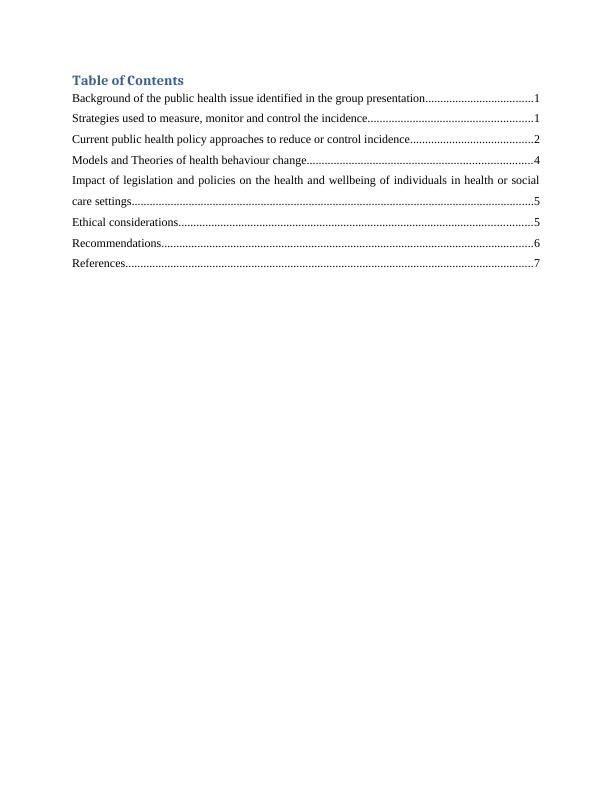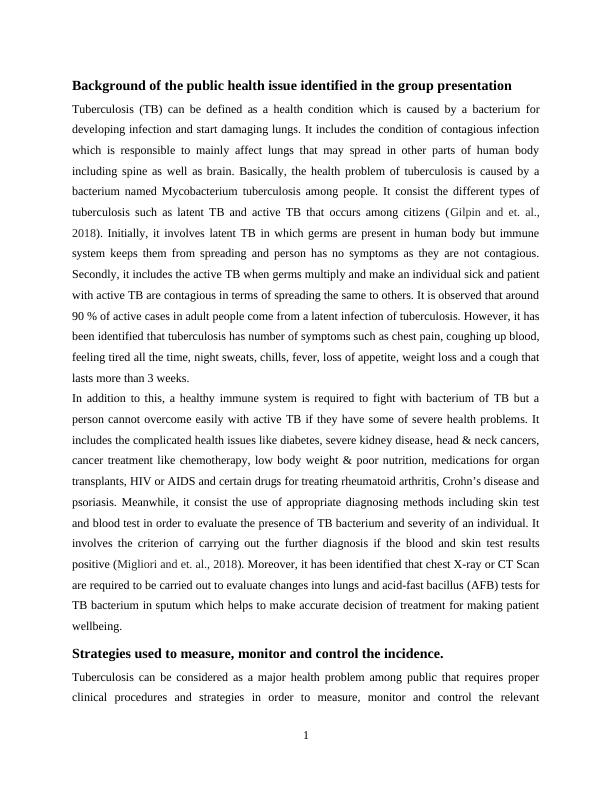Tuberculosis: Background, Strategies, Policies, and Ethical Considerations
9 Pages3120 Words40 Views
Added on 2023-01-07
About This Document
This document provides information about tuberculosis, including its background, strategies used to measure and control incidence, current public health policies, models and theories of health behavior change, the impact of legislation and policies on health and wellbeing, and ethical considerations. It also includes recommendations for healthcare professionals.
Tuberculosis: Background, Strategies, Policies, and Ethical Considerations
Added on 2023-01-07
ShareRelated Documents
End of preview
Want to access all the pages? Upload your documents or become a member.
Epidemiology Assignment on Tuberculosis
|16
|4620
|210
Epidemiology of Tuberculosis among individual more than 18 years in African Countries between 2005-2015
|15
|3052
|211
Epidemiology of Tuberculosis: Outbreak, Treatment, and Prognosis
|11
|3140
|478
Causal Organism of Tuberculosis
|5
|1112
|64
History of Tuberculosis - doc
|12
|2860
|252
TB in Hong Kong: Types, Effects, Prevention and Control
|12
|4533
|483



